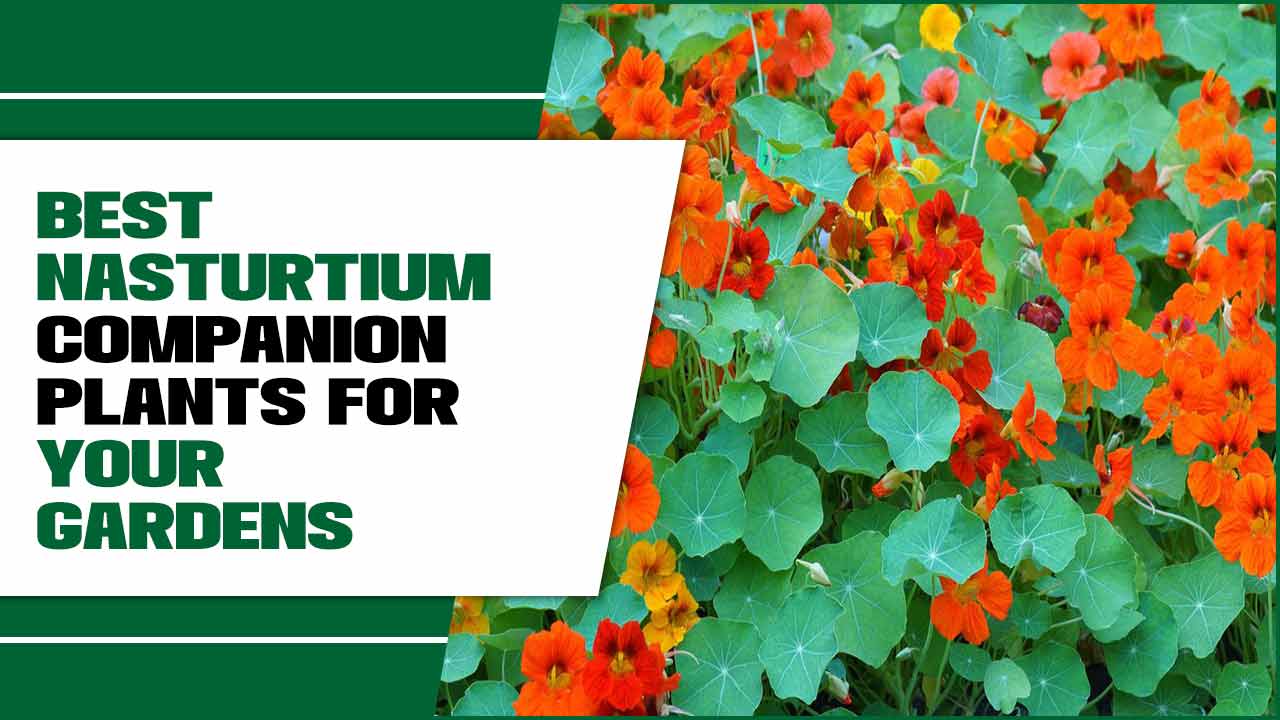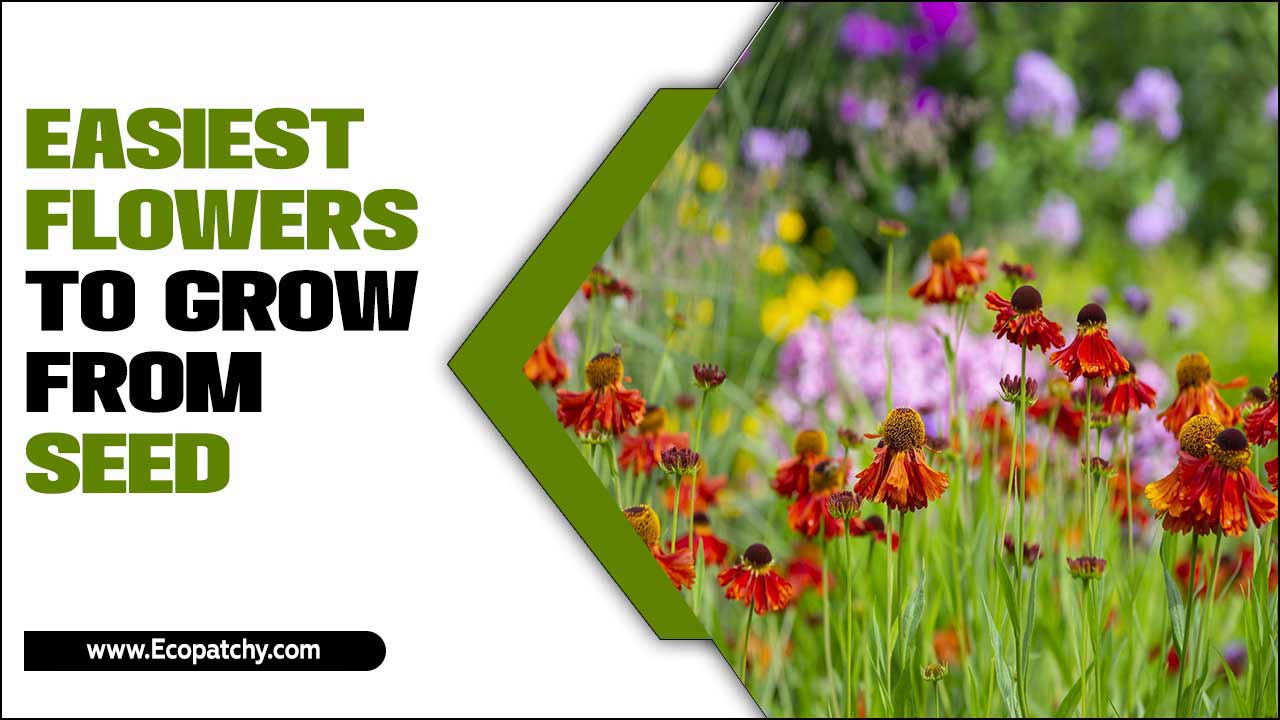Growing your flowers from seed is a satisfying and rewarding experience. If you’re looking for a plant that is easy to grow, vibrant in color, and edible, then Nasturtiums are the perfect choice.
In this blog post, we will provide a comprehensive guide on how to grow nasturtium from seed to flower in just 5 easy steps. From understanding Nasturtium seeds to preparing the soil, nurturing the seedlings, and caring for the plants until flowering.
We will also cover some common growing issues and provide tips on how to troubleshoot them. Lastly, we will share information on harvesting and using Nasturtium blooms as well as final tips for successful Nasturtium growing.
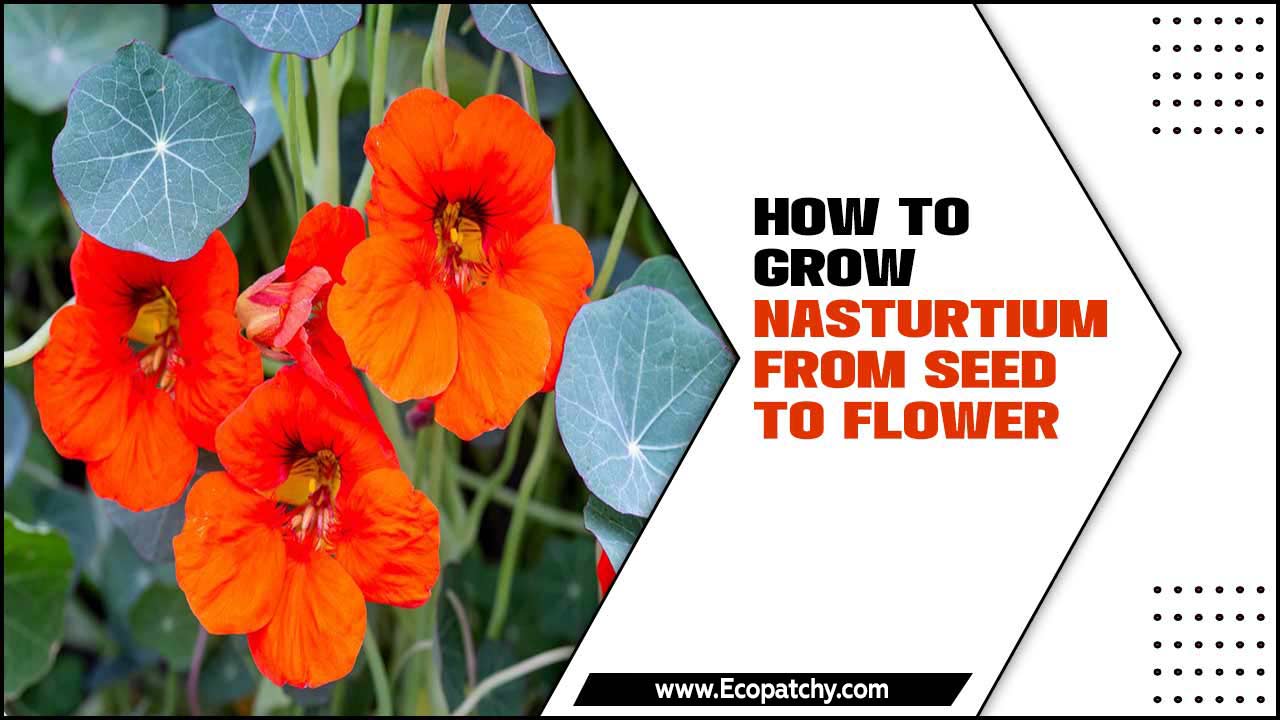
About Nasturtiums
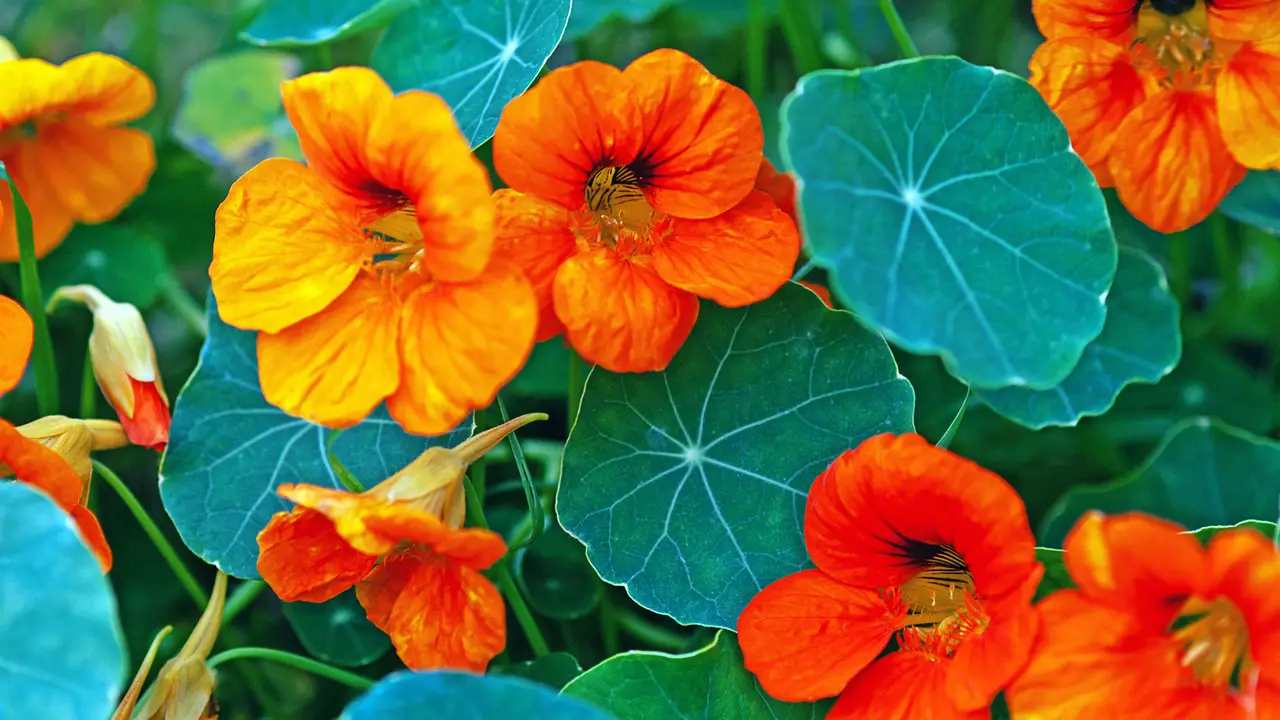
Nasturtiums are a popular choice for gardeners due to their vibrant colors and edible flowers. These plants are easy to grow from seed and can thrive in various conditions, making them suitable for both novice and experienced gardeners. Nasturtiums prefer full sun but can tolerate some shade, and they do well in well-drained soil.
They are known for their rapid growth, with seeds typically germinating within 7-10 days. Once the plants have reached maturity, they will produce beautiful flowers that range in color from bright yellows and oranges to deep reds.
Nasturtiums also have a unique peppery flavor, making them a versatile addition to salads or as a garnish on various dishes. With proper care and attention, you can enjoy the beauty and taste of nasturtiums in your garden throughout the growing season.
Understanding Nasturtium Seeds
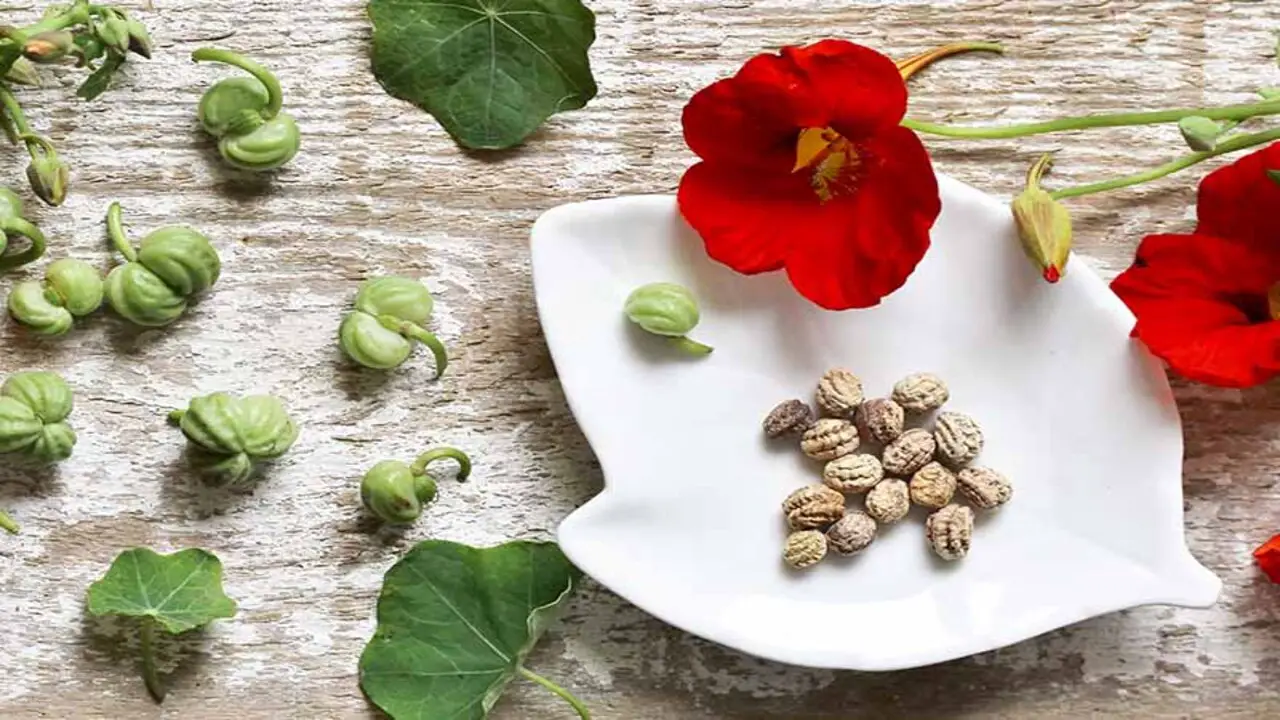
Understanding nasturtium seeds is a key step in successfully growing these beautiful flowers. Nasturtium seeds are round and flat, with a hard outer shell. They come in a variety of colors, including shades of orange, yellow, and red. Before planting nasturtium seeds, it is important to soak them in water overnight.
This helps to soften the outer shell and improve germination rates. Once soaked, the seeds can be planted directly into the soil or in seed trays. They should be planted about an inch deep and spaced a few inches apart. With proper care and attention, these seeds will sprout into vibrant nasturtium plants that will brighten up any garden or landscape.
How To Grow Nasturtium From Seed To Flower: 5 Easy Steps
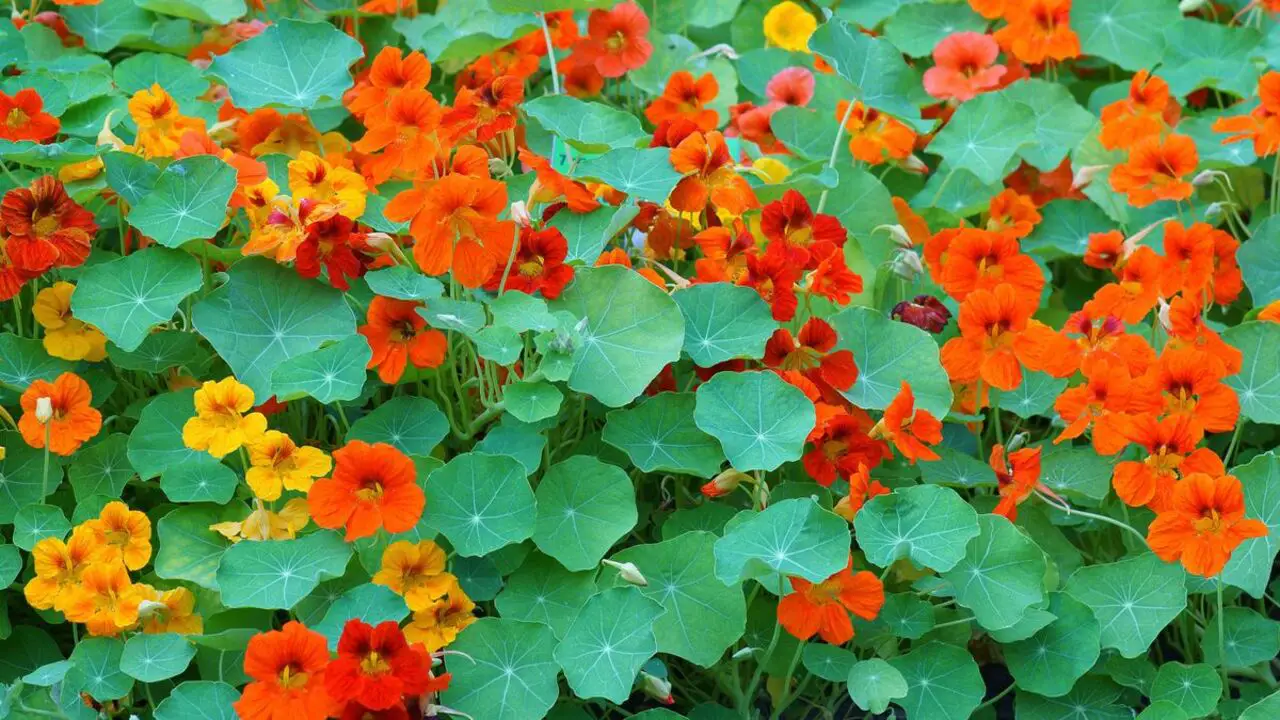
Growing nasturtiums from seed is a simple and rewarding process. Begin by preparing the soil, removing weeds, and loosening it with a garden fork. Sow the nasturtium seeds at the appropriate depth, typically about an inch deep.
Ensure they receive ample sunlight and are planted in well-drained soil. Nurturing the seedlings involves regular watering and protection from pests. With these five easy steps, you can successfully grow beautiful nasturtium flowers from seed.
1.Preparing The Soil
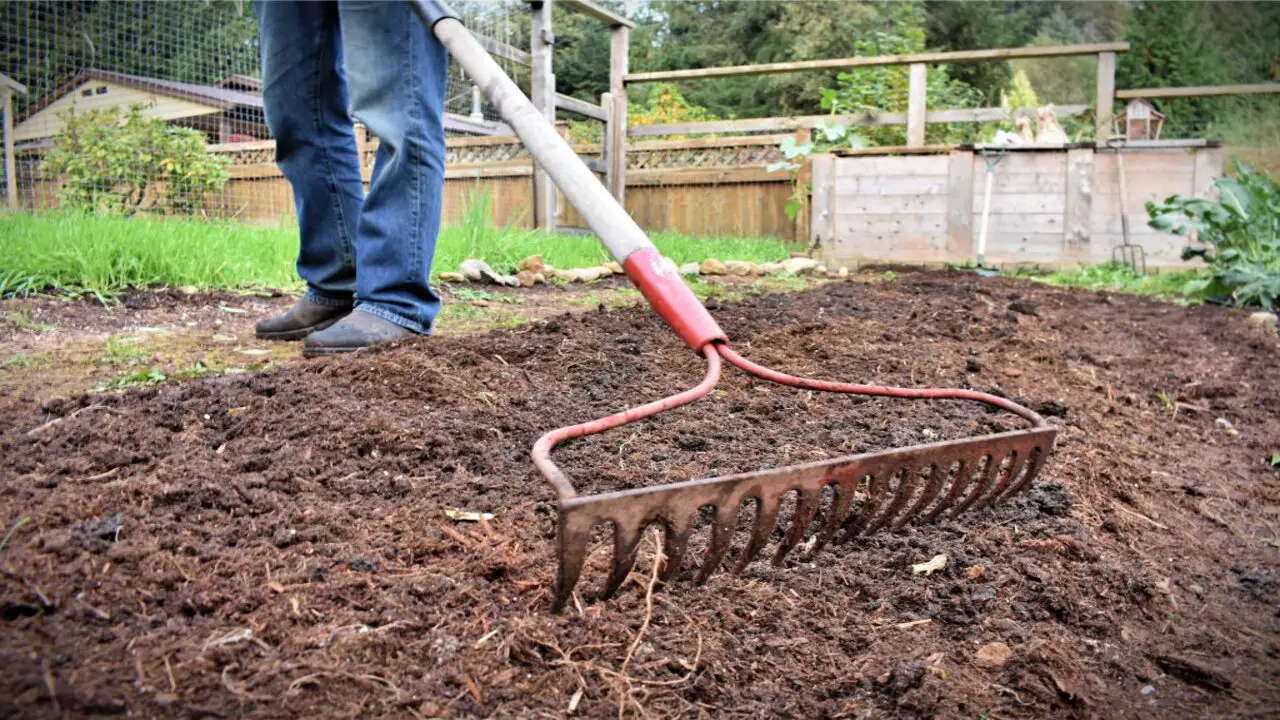
Start by clearing the soil of any weeds or debris to ensure optimal growth. Loosen it with a garden fork to improve drainage and create an ideal environment for nasturtium flowers. Adding organic matter to the soil will provide essential nutrients for the plants.
Aim for a neutral to slightly acidic pH level for best results. If you have heavy soils, consider creating raised beds or mounds to enhance drainage. By following these steps, you’ll prepare the soil for beautiful nasturtium blooms.
2.Sowing Nasturtium Seeds
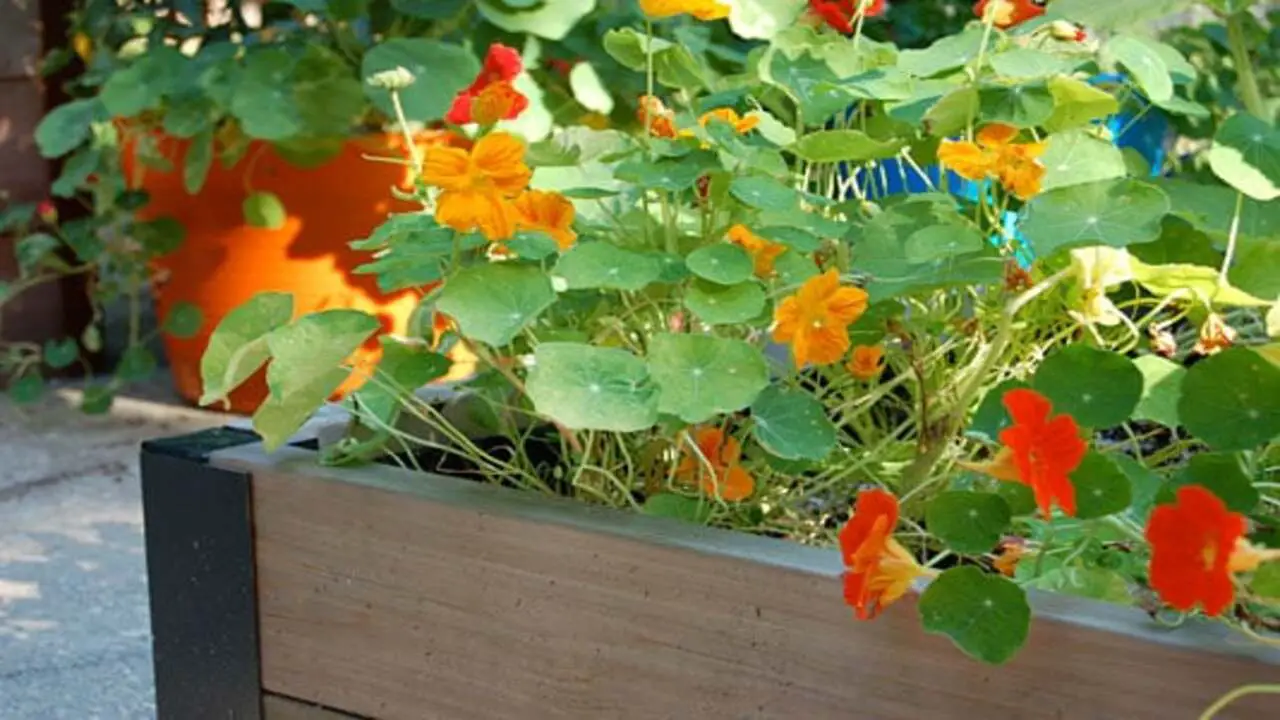
Sowing nasturtium seeds is a simple and rewarding process. To start, choose a sunny location in your garden or a container with well-draining soil. Nasturtium seeds can be sown directly into the soil or started indoors and transplanted later. If sowing directly, loosen the soil and remove any weeds or debris.
Plant the seeds about 1 inch deep and 10-12 inches apart, covering them with soil. Keep the soil consistently moist but not waterlogged. Germination usually occurs within 7-10 days. If starting indoors, sow the seeds in seed trays or pots filled with seed-starting mix.
Place the trays in a warm location and keep the soil moist until germination occurs. Once the seedlings have grown to a suitable size, they can be transplanted outdoors. With proper care and attention, your nasturtium seeds will soon grow into beautiful flowers that add vibrant color to your garden.
3.Providing The Right Growing Conditions
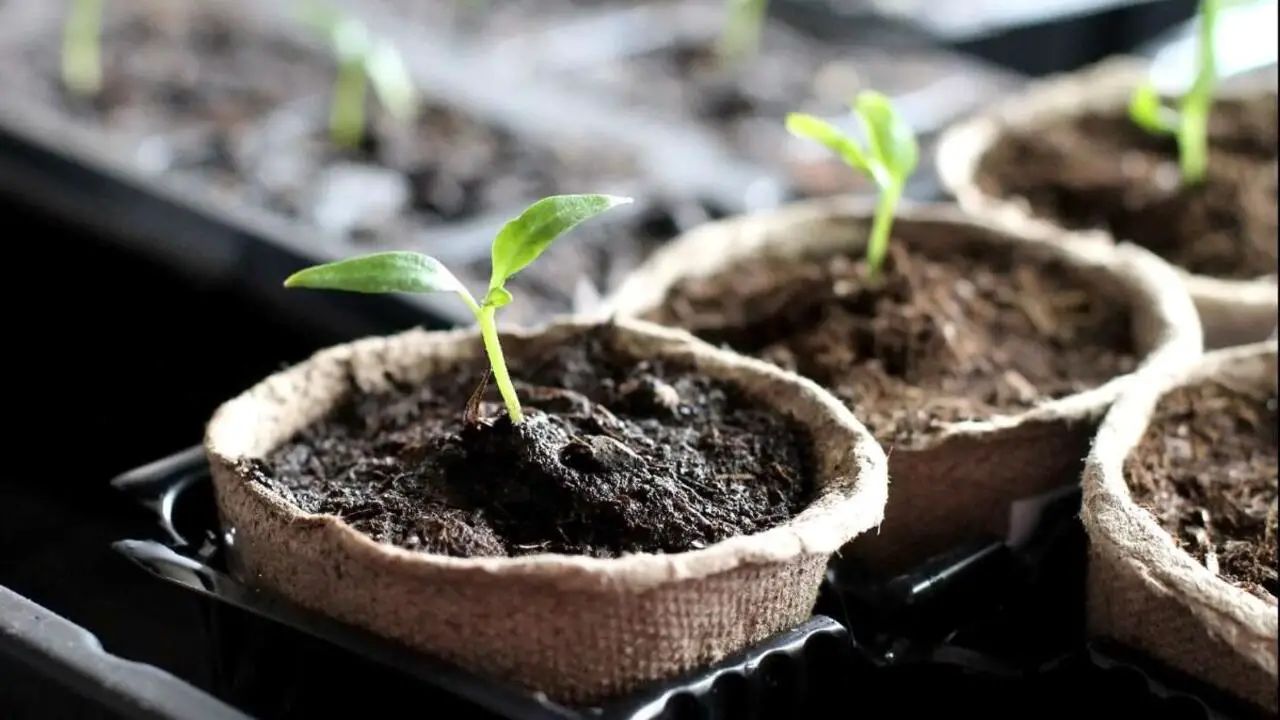
Providing the right growing conditions for nasturtiums is crucial to ensure optimal growth. These vibrant annual flowers thrive in full sun but can also tolerate partial shade. It’s important to ensure that the soil is well-drained and fertile.
Regular watering is necessary, allowing the soil to dry slightly between waterings. For climbing varieties, provide support structures like trellises or fences. Mulching around the plants helps conserve moisture and suppress weed growth. By creating the perfect environment, you can enjoy the beauty of nasturtium flowers in your garden.
4.Nurturing The Seedlings

Nurturing the seedlings is crucial in growing nasturtium from seed to flower. Once the seeds have germinated and sprouted, providing them with the right conditions for growth is important. Nasturtiums prefer well-draining soil and plenty of sunlight, so be sure to plant them in a location that receives at least six hours of direct sunlight daily.
Keeping the soil consistently moist but not waterlogged is also important, as overly wet conditions can lead to root rot. Regularly check the moisture level of the soil and water when necessary. Additionally, it can be beneficial to support the seedlings as they grow using stakes or trellises.
This will help prevent them from sprawling on the ground and promote upward growth. With proper care and attention, your nasturtium seedlings will thrive and eventually blossom into beautiful flowers.
5.Caring For Nasturtium Plants Until Flowering
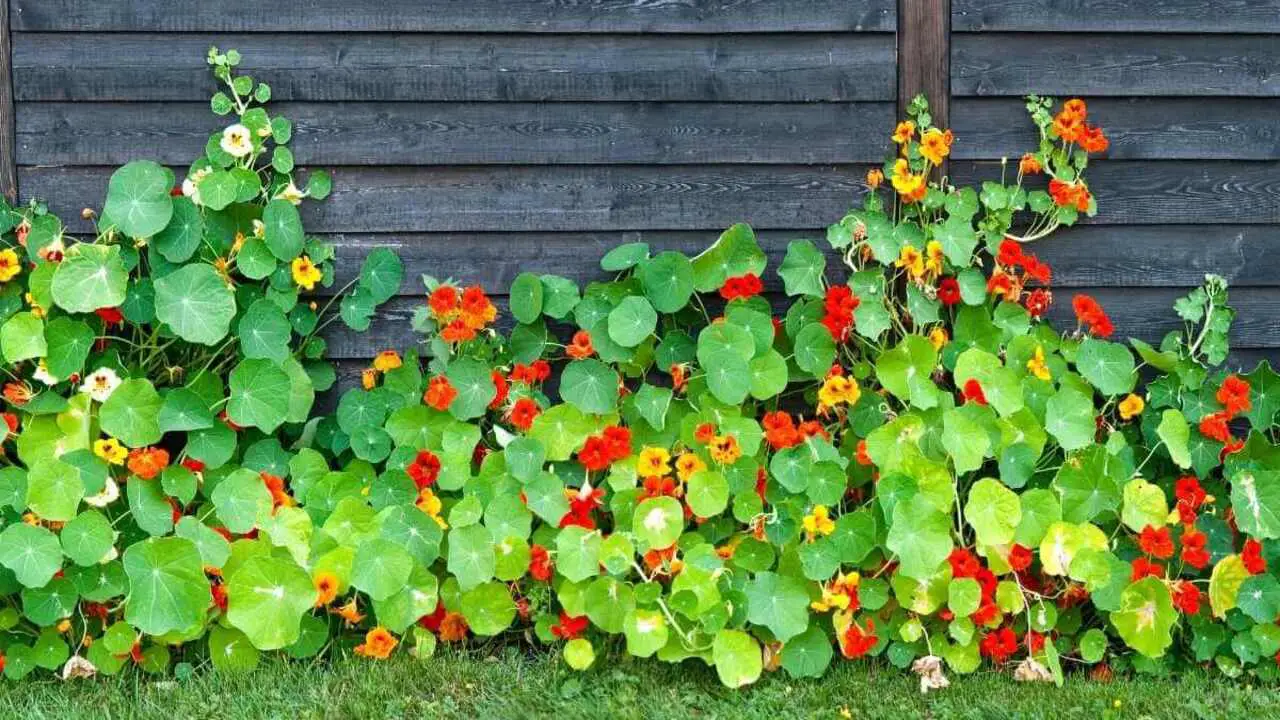
It is important to follow a few care practices to ensure the healthy growth of your nasturtium plants until they bloom. Regular watering, especially during dry conditions, will keep the plants hydrated. Pinching back the growing tips will encourage bushier growth and more abundant blooms.
Removing any dead or yellowing leaves will help maintain a tidy appearance. Applying a layer of mulch around the plants will conserve moisture and prevent weed growth. Look for common pests like aphids or caterpillars and take appropriate measures to protect your plants.
Troubleshooting Common Nasturtium Growing Issues
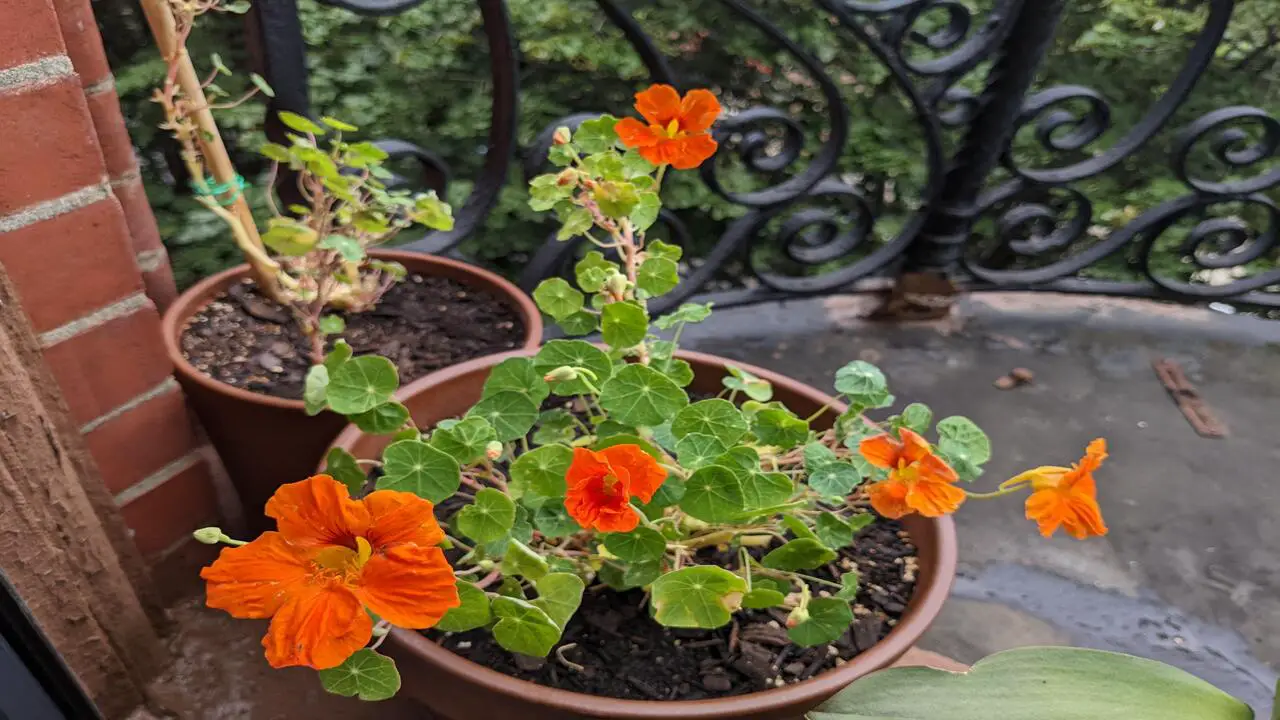
Growing nasturtiums from seed to flower can be a rewarding experience, but like any gardening endeavor, it can come with its fair share of challenges. If you encounter common growing issues with your nasturtiums, By addressing these common nasturtium growing issues, you can increase your chances of successfully cultivating these vibrant and versatile flowers in your garden. Here are some troubleshooting tips to help you overcome them:
- Poor Germination: If your seeds are having trouble sprouting, try scarifying them by gently nicking the seed coat or soaking them in water overnight before planting. This can help break down the tough outer layer and promote germination.
- Slow Growth Or Yellow Leaves: Nasturtiums thrive in full sun and well-draining soil. If your plants are not growing vigorously or their leaves are turning yellow, they may be getting too much shade or sitting in waterlogged soil. Make sure to provide them with adequate sunlight and ensure proper drainage by amending the soil with organic matter.
- Lack Of Flowers: Nasturtiums typically bloom best when they receive plenty of sunlight and moderate amounts of nutrients. If your plants aren’t producing many flowers, try moving them to a sunnier location and avoid over-fertilizing, as this can lead to excessive leaf growth at the expense of blooms.
- Pest Infestations: Nasturtiums are generally resilient against pests, but they can still fall victim to aphids, caterpillars, or slugs. Monitor your plants regularly for any signs of pest damage. Take appropriate measures such as handpicking pests, using organic insecticides if necessary, or employing natural deterrents like companion planting with marigolds.
Harvesting And Using Nasturtium Blooms
When harvesting nasturtium blooms, choose ones that are fully open and vibrant in color. These beautiful flowers can be used as a colorful garnish to enhance the presentation of salads, soups, or desserts. With their peppery flavor, nasturtium blooms add a unique twist to any culinary creation.
For preservation, place the blooms in a jar with vinegar to create pickled nasturtium capers. Alternatively, you can dry the blooms and use them in teas or infused oils for various purposes. Nasturtium blooms offer a delightful and versatile addition to your kitchen repertoire.
Final Tips For Successful Nasturtium Growing
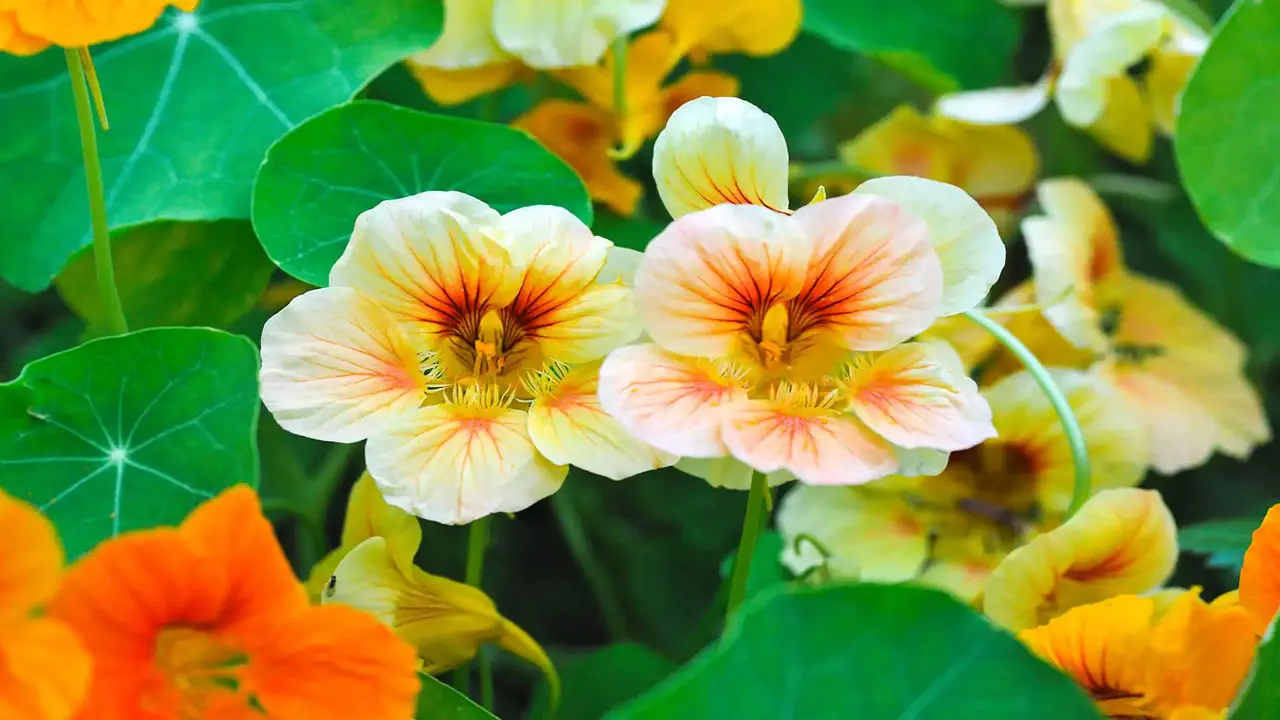
Following these tips, you can enjoy beautiful and vibrant nasturtium flowers throughout the growing season. Here are some final tips to ensure the successful growing of nasturtium from seed to flower:
- Choose A Sunny Location: Nasturtiums thrive in full sun, so make sure to choose a spot in your garden that receives at least 6-8 hours of direct sunlight per day.
- Provide Well-Draining Soil: Nasturtiums prefer soil that is loose and well-draining. If your soil is heavy or clay-like, consider amending it with compost or sand to improve drainage.
- Water regularly but don’t Overwater: Nasturtiums like to be kept consistently moist, but they don’t like wet feet. Water deeply once or twice a week, allowing the soil to dry out slightly between waterings.
- Mulch To Conserve Moisture: Applying a layer of mulch around your nasturtium plants can help retain moisture in the soil and suppress weed growth.
- Watch Out For Pests: Nasturtiums are generally resilient and pest-resistant, but keep an eye out for aphids and caterpillars. If necessary, treat with organic pest control methods such as neem oil or handpicking.
- Deadhead Spent Flowers: Regularly remove faded or wilted flowers to encourage continuous blooming and prevent the plant from going to seed too soon.
Conclusion
To successfully grow Nasturtiums from seed to flower, follow these simple steps. First, prepare the soil by loosening it and adding compost for nutrients. Next, sow the Nasturtium seeds about an inch deep and water them gently. Provide the right growing conditions, including full sun and well-drained soil.
Nurture the seedlings by keeping the soil moist and protecting them from pests. As the plants grow, continue caring for them by watering regularly and providing support if needed. Troubleshoot common growing issues like aphids or powdery mildew.
When the flowers bloom, harvest them for culinary uses or enjoy their vibrant colors in your garden. Finally, remember these tips for successful Nasturtium growing: deadhead spent blooms, save seeds for future planting, and embrace their versatility in salads, soups, or as a garnish. We hope you understand how to grow nasturtium from seed to flower. Happy Nasturtium growing!
Frequently Asked Questions
1.How Long Does It Take For Nasturtiums To Bloom From Seed?
Ans: Nasturtiums typically take 7-14 days to germinate and 8-12 weeks to bloom from seed. The exact timing may vary based on growing conditions and climate. Once they start flowering, nasturtiums will continue to produce blooms throughout the growing season.
2.Should I Soak Nasturtium Seeds In Water Before Planting?
Ans: Soaking nasturtium seeds in water for a few hours before planting can speed up germination. However, it’s not necessary. Nasturtium seeds are easy to grow and don’t require special treatment. Plant them directly into compost-enriched soil that has been loosened.
3.What Month Do You Plant Nasturtium Seeds?
Ans: Nasturtium seeds are typically planted directly in the soil after the last frost date, which is usually late spring or early summer. However, in warmer climates, they can be planted earlier. Choose a sunny spot with well-draining soil for optimal growth.
4.How Do You Get Nasturtiums To Flower?
Ans: To get nasturtiums to flower, ensure they have well-draining soil and abundant sunlight. Avoid over-fertilizing as it can hinder flowering. Deadhead spent flowers to encourage more blooms. Regular watering promotes healthy growth and flowering.
5.How Long Do Nasturtium Plants Live?
Ans: Nasturtium plants, being annuals, complete their lifecycle within a year. With ideal growing conditions, they can live up to 12 months. After the blooming season ends, the plant naturally starts to die back. Regularly removing spent flowers and providing proper water and fertilization can extend their lifespan.

